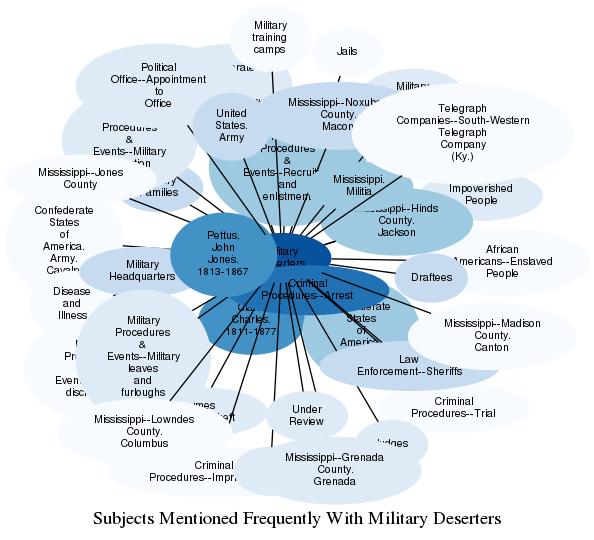Description
During the American Civil War, desertion primarily indicated one's fleeing from camp and thereby attempting to permanently escape military service altogether rather than one's fleeing from battle when faced with the enemy.
As the war continued past its first few months and the reality of battle disabused men both North and South of the romanticized visions of combat they formerly possessed, both the Union and Confederate armies saw large numbers of deserters. One estimate places roughly 103,000 deserters in the Confederate Army and over 200,000 in the Union Army (Essential Civil War Curriculum).
Men on both sides deserted for a number of reasons, including poor conditions and the rigor of military camp life, concern for their family's well being at home, low morale after defeats in battle, or general homesickness. Many deserters were of a class known as "bounty jumpers," or those who joined the military to receive an initial payment known as a bounty, only to flee military service immediately afterword. While the Union Army faced a greater total number of desertions, the Confederacy ultimately suffered more from desertion due to its lower total manpower.
Both sides nonetheless took stern measures to discourage desertion. Punishment of deserters varied on both sides at different points during the war, ranging anywhere from corporal punishment to humiliation or, later in the war, execution. Though only about 400 executions ever took place to punish a much larger number of deserters, it is indicative of the brutal reality of Civil War military service that many men, despite the potential death sentence, still felt compelled to desert (Essential Civil War Curriculum).
Related Subjects

The graph displays the other subjects mentioned on the same pages as the subject "Military Deserters". If the same subject occurs on a page with "Military Deserters" more than once, it appears closer to "Military Deserters" on the graph, and is colored in a darker shade. The closer a subject is to the center, the more "related" the subjects are.